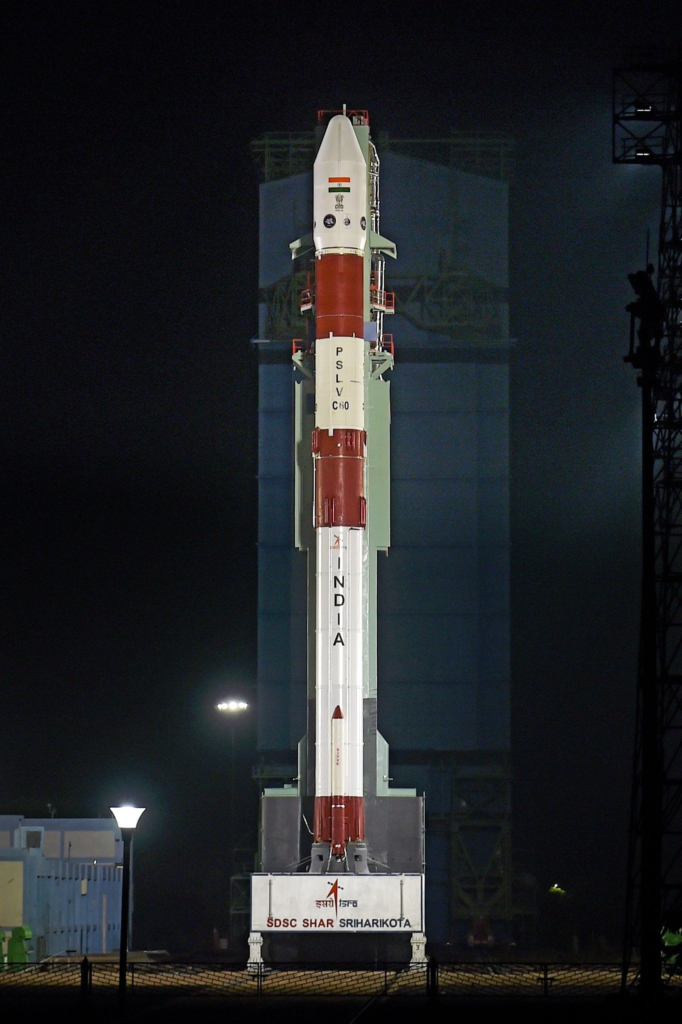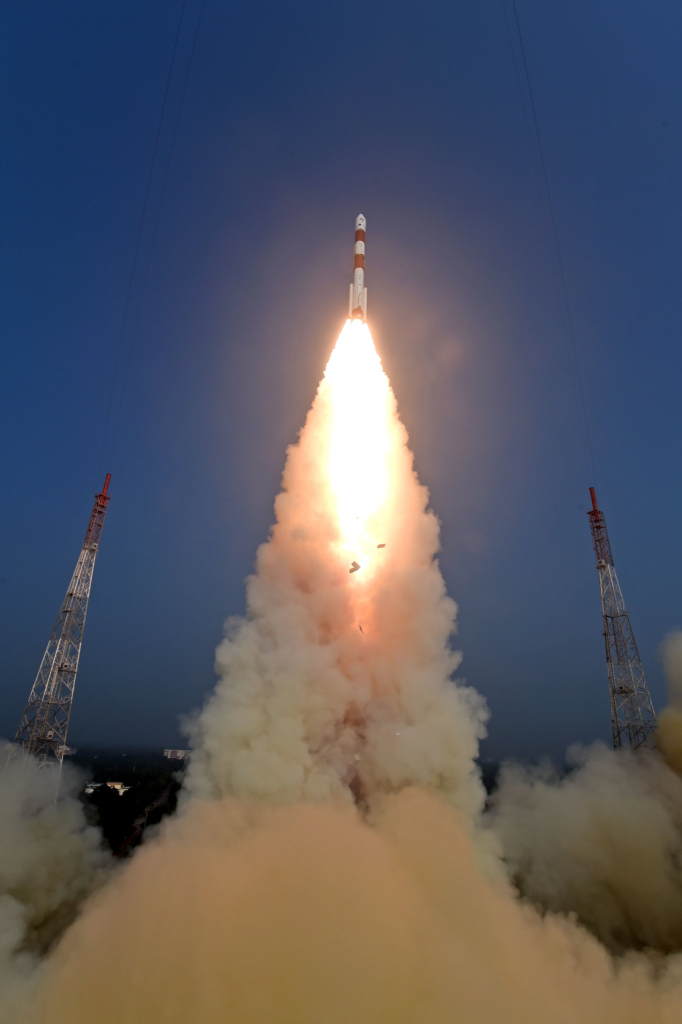ISRO SpaDeX Mission: ISRO has created a new history by successfully launching the ‘Space Docking Experiment’ i.e. Spadex Satellite on Monday evening. In this way, India has taken another glorious flight in the world of space. Through this indigenously developed docking technology, ISRO will connect two spacecrafts. With the success of this mission, India will be at par with Russia, America and China.
At 10 pm on Monday night, another milestone was added to the history of the Indian space program. When the SpadeX mission was carried out through PSLV-C60 from Satish Dhawan Space Center, Sriharikota. In the world of space, only Russia, America and China have mastered the technology of docking and undocking on their own. Now India is also preparing to join this group.
Table of Contents
ISRO’s Spadex mission is a cost-effective technology demonstration mission to demonstrate docking in space launched by PSLV. According to the Indian Space Agency (ISRO), the primary objective of the Spadex mission is to develop and demonstrate the technology required for rendezvous, docking and undocking of two small spacecraft (SDX 01 and SDX 02) in low circular orbit of the Earth.

Understand this mission of India in simple language
There are two satellites in orbit. A proximity operation is required to bring them together and connect them. The signal has to be captured by going close to it and then it has to be redesigned. Just like Sunita Williams went from Earth in the Space Crew Liner and entered the Space Station. Similarly, India has to create a Shield Unit and for this docking is required.
And to understand in simpler terms, we can take the example of a pen. For example, fitting the cap on the pen is docking. This is a very complex task in space and is necessary for many space missions.
- America first docked in space on March 16, 1966
- The Soviet Union first docked two spacecraft in space on October 30, 1967
- China performed its first space docking on November 2, 2011
ISRO has launched two small satellites using a 229 tonne PSLV rocket under the SpaDeX mission. These satellites will do docking and undocking at an altitude of 470 km.

How difficult is docking and undocking?
Satellites move very fast in space. 7.8 km/second. For example, if two satellites move at the same speed, the difference is minimal. It will be controlled by ICI. Then both will move together at the same speed and will connect. It is like two trains moving fast in the same direction on adjacent tracks and their doors are facing each other, but how to go. This is what has to be done in space through computers.
India is going to do a very big experiment in space. Launching two satellites from the same rocket, then bringing them close in space and taking them away. This is called docking and undocking. It is easy to say, but very difficult to do. When they are brought close and taken away, both satellites will be moving faster than the speed of a bullet in space. Bringing satellites moving faster than a bullet close to each other and not colliding with each other is a very difficult task.
Docking undocking technology will be used in Chandrayaan-4 mission
This docking undocking technology will be used in India’s Chandrayaan-4 mission. Which is a sample return mission from the moon. Then the Indian space station will be built, then many modules will be taken from the earth and connected in space and in 2040 when an Indian will be sent to the moon and brought back, even then docking and undocking experiments will be needed. This docking undocking is a very complicated task. So far only Russia, America and China have mastered it. Now India is moving towards it.
ISRO has said that this is an important milestone in India’s space program. Spadex is an ambitious mission to establish India’s capability in orbital docking, which is an important technology for future manned space missions and satellite service missions. With its help, it will be possible to send humans from one spacecraft to another.
The country’s own station – ‘Indian Space Station’ will be built
Docking technology in space will be essential to fulfill India’s space ambitions, which include sending humans to the moon, bringing back samples from there and building and operating the country’s own space station – the Indian Space Station. Docking technology will also be used when more than one rocket launch is planned to achieve common mission objectives.
ISRO said that the PSLV rocket will put the two spacecraft – Spacecraft A (SDX01) and Spacecraft B (SDX02) – into an orbit that will keep them five kilometres apart from each other. Later, scientists at ISRO headquarters will try to bring them closer by three metres, after which they will join together at an altitude of about 470 kilometres from the Earth.

Docking and undocking process is expected to take place 10 to 14 days after launch
ISRO officials said that this process is expected to take place about 10 to 14 days after the launch on Monday. After performing the ‘docking’ and ‘undocking’ experiments, both the satellites will continue to orbit the Earth for two years on separate missions. The SDX-1 satellite is equipped with High Resolution Camera (HRC) and SDX-2 has two payloads Miniature Multispectral (MMX) Payload and Radiation Monitor (RadMon).
ISRO said that these payloads will provide high-resolution images, natural resource monitoring, vegetation studies and radiation environment measurements in orbit, which have many applications. ‘Spacecraft A’ in the ‘Spadex Mission’ has a high resolution camera, while ‘Spacecraft B’ consists of miniature multispectral payload and radiation monitor payload. These payloads will provide high-resolution images, natural resource monitoring, vegetation studies etc.
Start-ups and private institutions will conduct experiments in space
The fourth stage of the PSLV rocket, which will remain in orbit for some time after launching two satellites on Monday, will give start-ups and private institutions an opportunity to experiment in outer space. India’s space regulator is emerging as a common link in turning these projects into reality.
PSLV Orbital Experiment Module (POEM) will carry 24 experiments to demonstrate various technologies in space. Of these, 14 experiments are from various laboratories of Indian Space Research Organisation (ISRO) and 10 experiments are from private universities and start-ups.
A common link between the equipment of start-ups and private universities is the technology centre located at the Ahmedabad headquarters of the Indian National Space Promotion and Authorisation Centre (IN-SPACe), India’s space regulator and promoter.
“We give them all the support, including testing facilities as well as consultants to help them with any problems,” said Rajiv Jyoti, director, IN-SPACe.
Trying to grow seeds in outer space
Demonstration of seed germination in outer space, a robotic arm to capture debris and testing of a green propulsion system are some of the experiments planned on board the fourth stage of ISRO’s PSLV rocket ‘POEM-4’.
ISRO plans to grow eight cowpea seeds from seed germination and plant nutrition to two-leaf stage in a closed box-like environment with active thermal control as part of Compact Research Module for Orbital Plant Studies (CROPS) developed by Vikram Sarabhai Space Centre (VSSC).
The Amity Space Plant Experiment Module (APEMS) developed by Amity University, Mumbai, plans to study the growth of spinach in a microgravity environment. The ‘Debris Capture Robotic Manipulator’ developed by VSSC will demonstrate the capture of debris tied to a ‘robotic manipulator’ in the space environment.
Also read:
Scientists Achieve Breakthrough! New Machine Can Record Dreams—Watch Your Dreams Turn into Videos!
